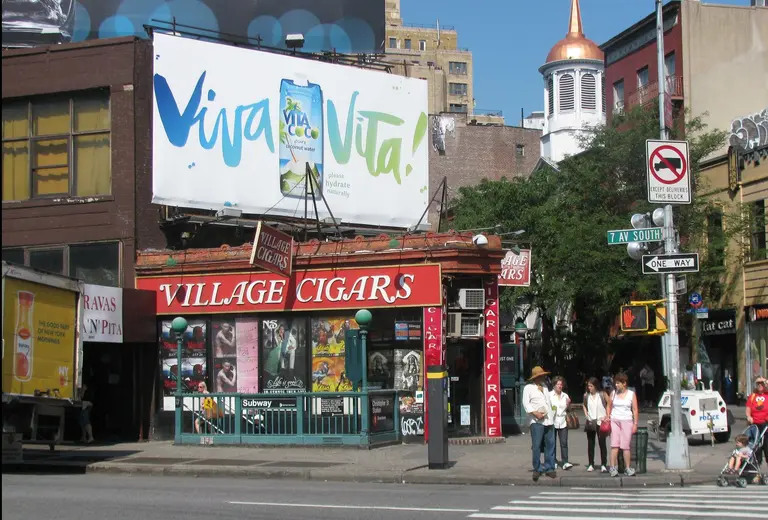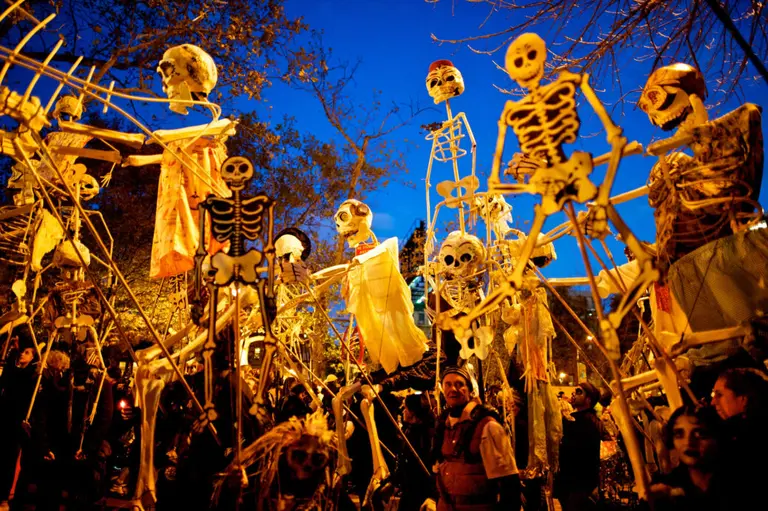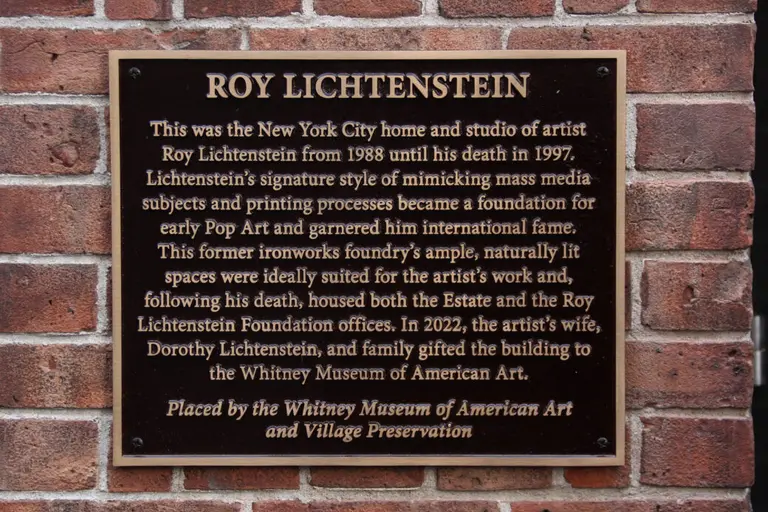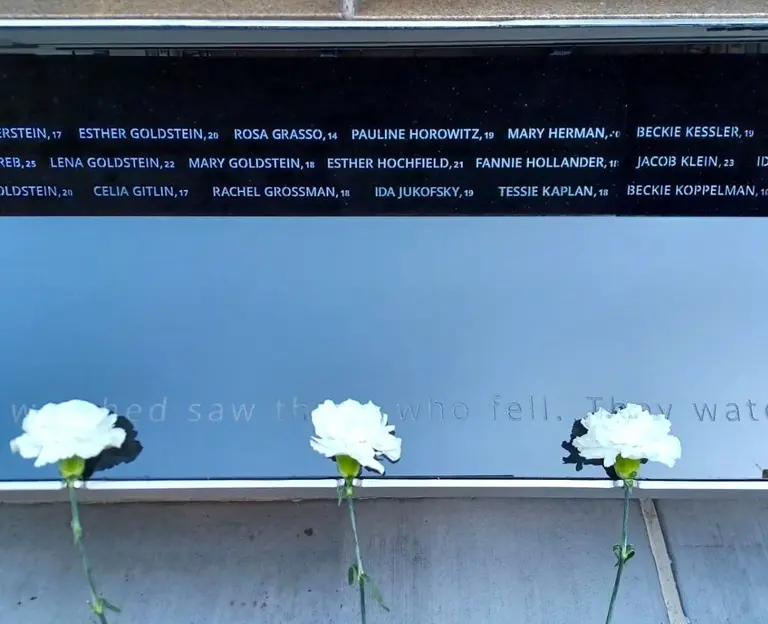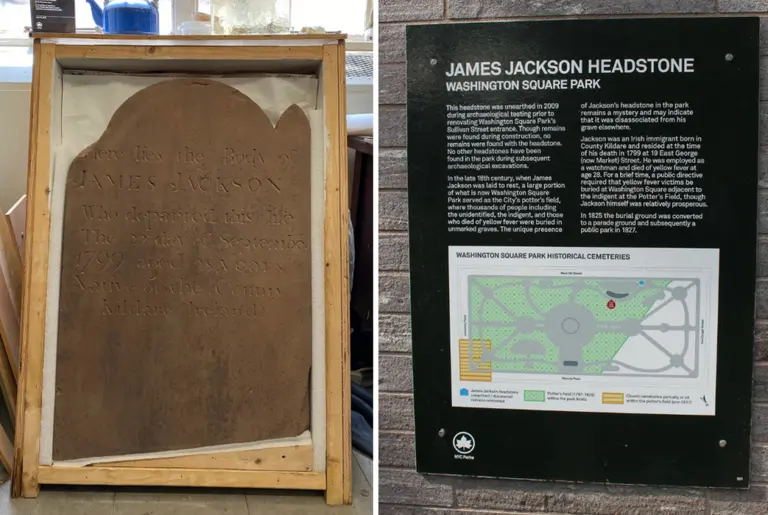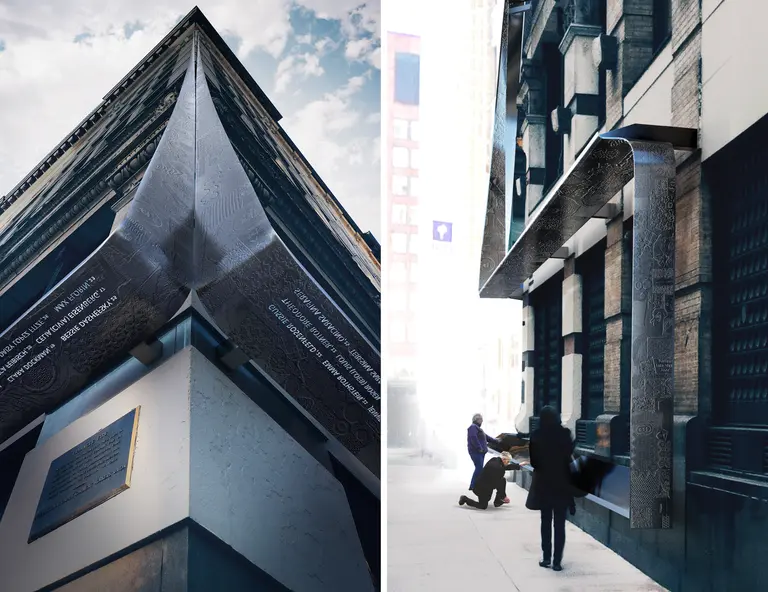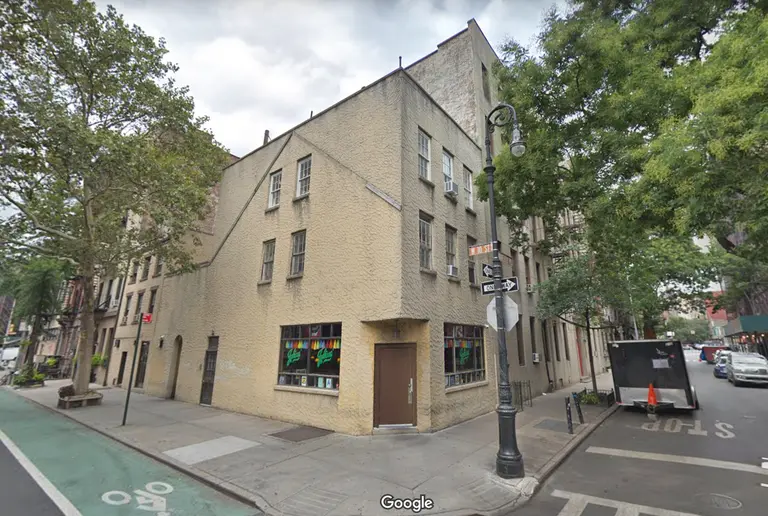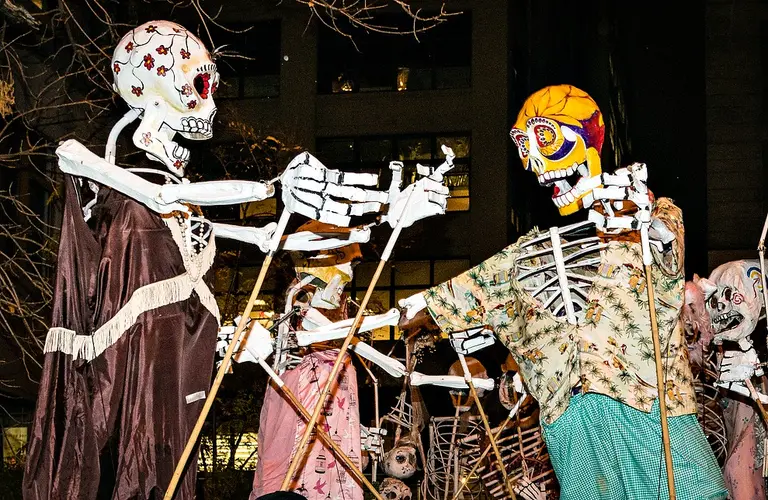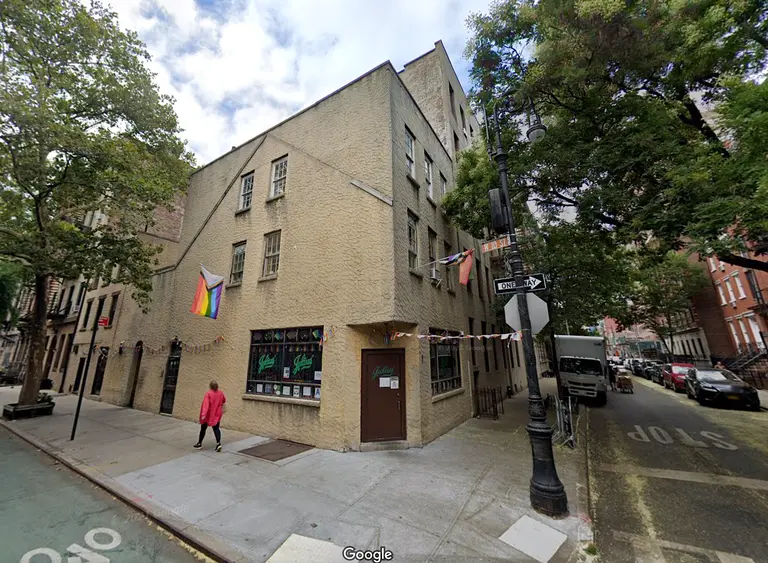Hundreds of bone fragments to be reburied under Washington Square Park
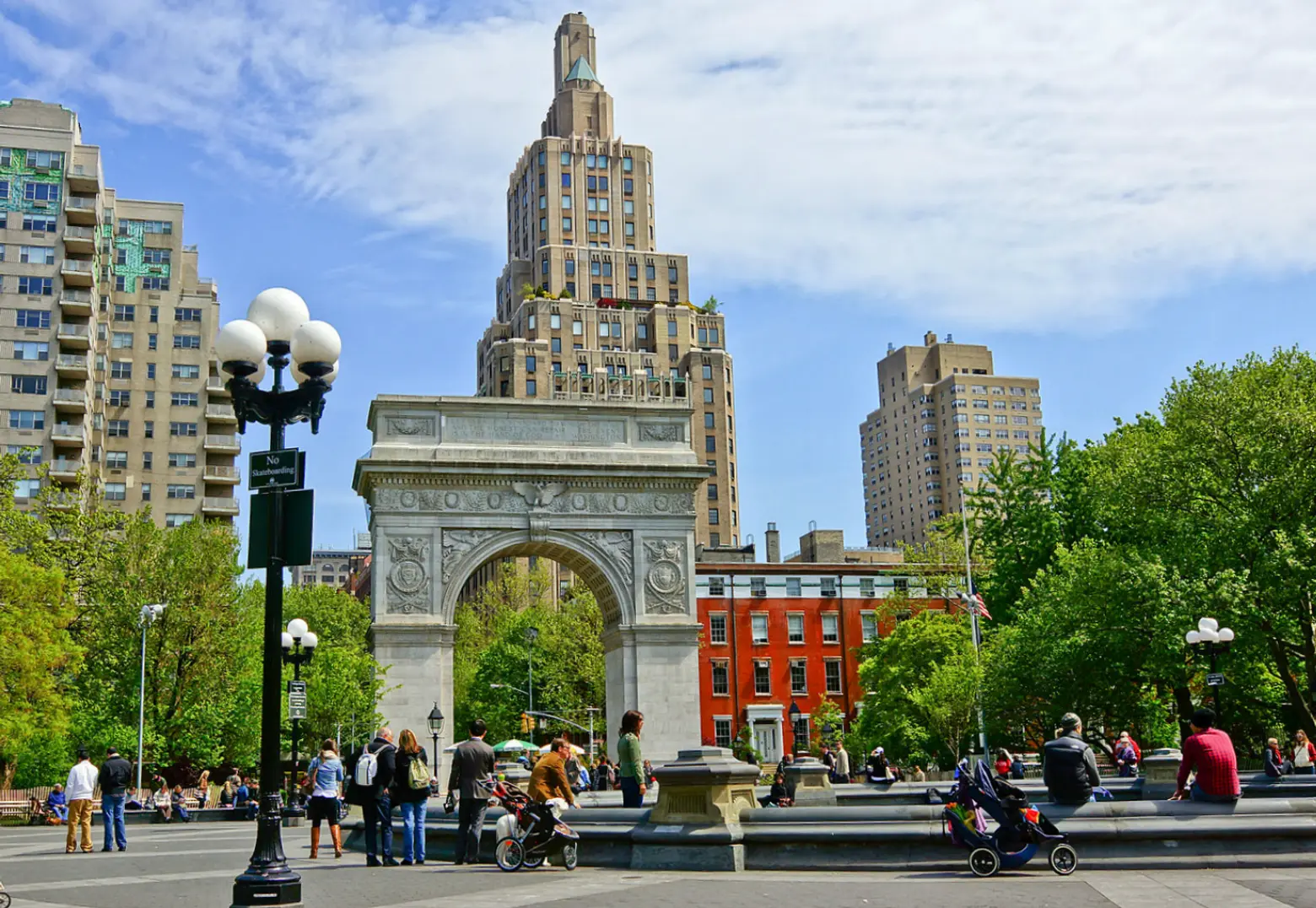
Via Wikimedia
While upgrading water mains under Washington Square Park in 2015, city workers unearthed two 19th-century burial vaults containing the skeletal remains of at least a dozen people. As part of Landmarks Preservation Commission protocol, intact burials were left untouched, but the city had removed several hundred bone fragments. Four years later, plans to rebury the remains under the park are moving forward as the Parks and Recreation Department presents its idea to place the fragments in a “coffin-sized” box, according to the Villager.
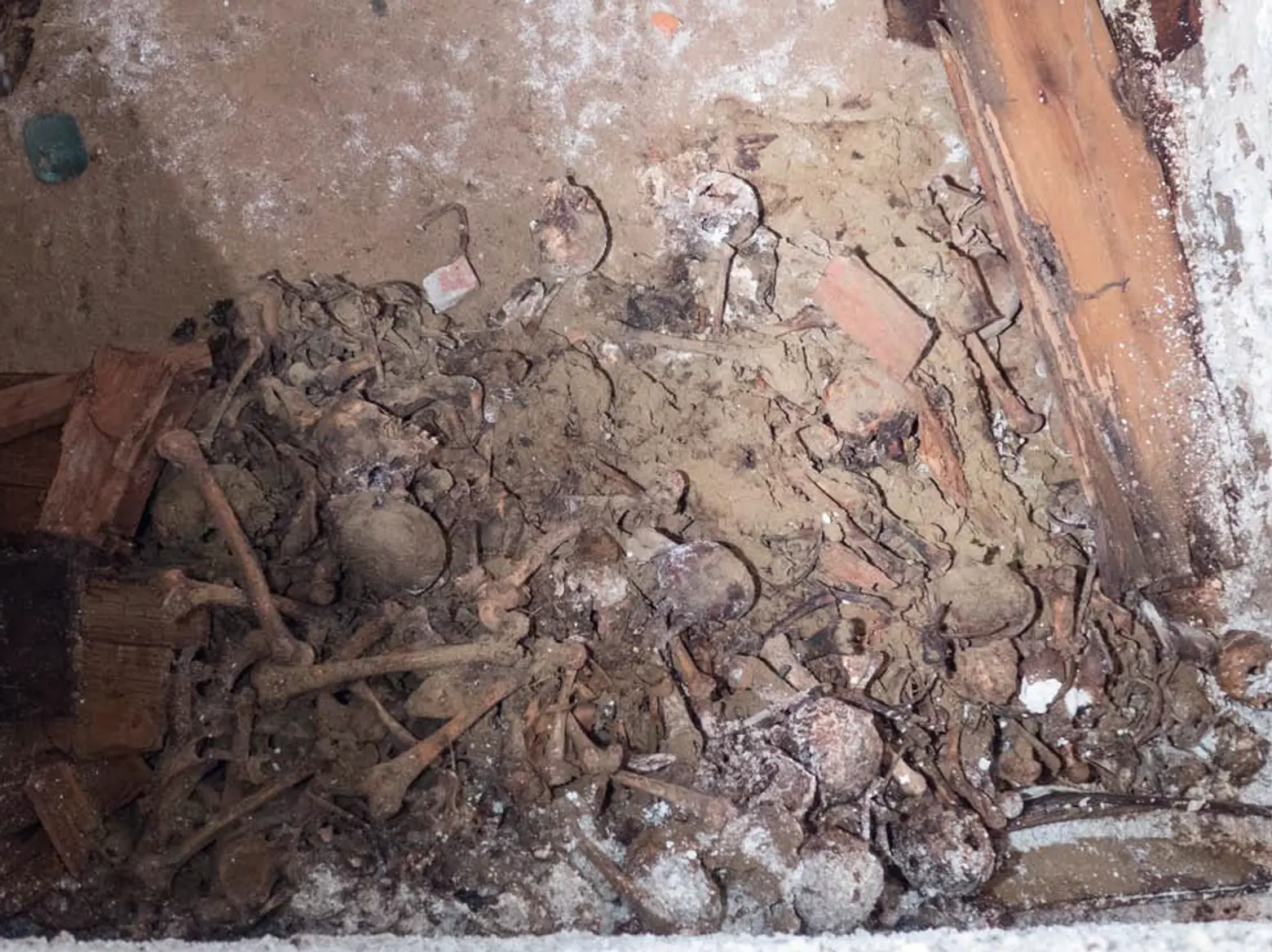
Photo courtesy of the Department of Design and Construction
Originally, more than half of what is now Washington Square Park served as a potter’s field. During the late 18th century and early 19th century, it is believed that 20,000 people were buried under the park during a 30 year period.
During a meeting last month with members of Community Board 2’s Parks and Waterfront Committee, the Parks Department said the remains would be buried together in one box. The box would be lowered five feet below ground in an existing planting bed and sit near the park entrance at Sullivan Street and Washington Square South.
An engraved granite paver would mark the site. The LPC’s archaeology department proposed the following text for the paver:
“From 1797 until 1825, what is now Washington Square Park was the City’s Potter’s Field, where thousands of people including the unidentified, the indigent and those who died of yellow fever were buried. In addition, several church burial grounds were located in the northeast portion of the park. Fragmentary remains of some of the early New Yorkers buried in this Potter’s Field were found by archaeologists during construction in and adjacent to Washington Square Park between 2008 and 2017. The City reinterred the remains on this site in 2019.”
The reinterment process, which the city says will happen before the fall,will take just one day to complete.
[Via The Villager]
RELATED:


